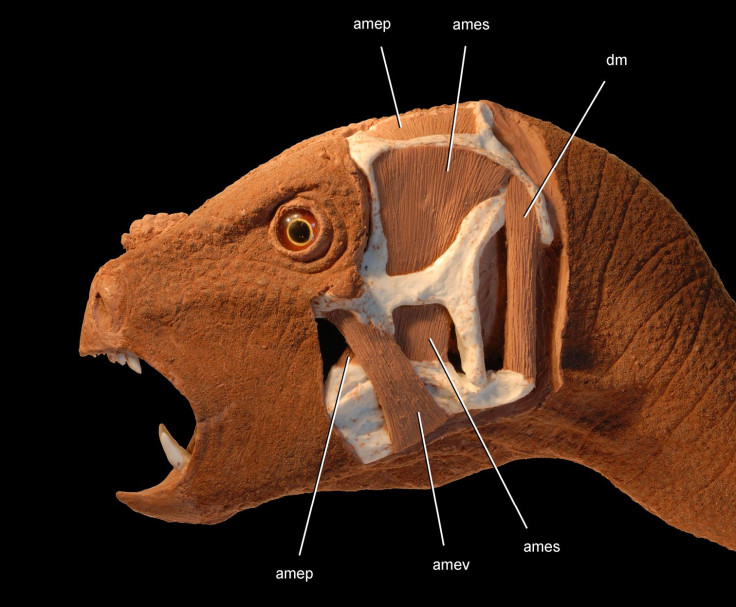Dracula Dinosaur Newly Described, "Would Be Nice Pet"

A strange and tiny dinosaur has just been documented for the first time in scientific literature. Almost as strange as its physical appearance, was its journey to being described.
Fossils of the family of this dinosaur, called Pegomastax africanus or "thick jaw from Africa," have appeared everywhere from China to England. It was first discovered 50 years ago in South Africa but was soon scooped up by Harvard University. The fossils were never described and then, when it was shipped back to Cape Town's South African Museum, the true nature of the fossils remained undiscovered.
Paul C. Sereno, who published a paper on it and other dinosaurs in its family yesterday, first saw the dinosaur nearly 30 years ago in 1983. When he first saw it, he says, "my eyes popped, as it was clear this was a distinct species." But, as an enterprising graduate student, he was focused on other more ambitious projects, though he quipped in an interview that he is smarter now.
Sereno examined the fossil. His assessment revealed a herbivorous species with a parrot-like beak and, strangely, sharp canines sitting in front of tall teeth meant to cut up plants. The tall teeth acted as self-sharpening scissors, but the canines are more puzzling. The dinosaur is part of the heterodontosaur family (meaning "different teeth"), and some scientists have suggest that the family may have eaten insects and meat. But Sereno believes that the teeth were simply meant to protect itself against predators and for competitive sparring, rather than serving a culinary purpose.
Pegomastax and other heterodontosaurs are believed to have lived 200 million years ago, at about the time that Pangaea was breaking up. That is why members of the same family can look so different; one species had triangular teeth, while Pegomastax has a higher crown.
The species had a skull about three inches long. Its body was less than two feet long and probably weighed less than a small housecat. Sereno believes that the animal may have been covered with porcupine-like quills. That assessment is based on the finding of another species of heterodontosaur, the Tianyulong, which had been discovered in volcanic ash in China and was covered in bristles.
If the tiny dinosaur lived today, Sereno joked, "It would be a nice pet-if you could train it not to nip you."



























